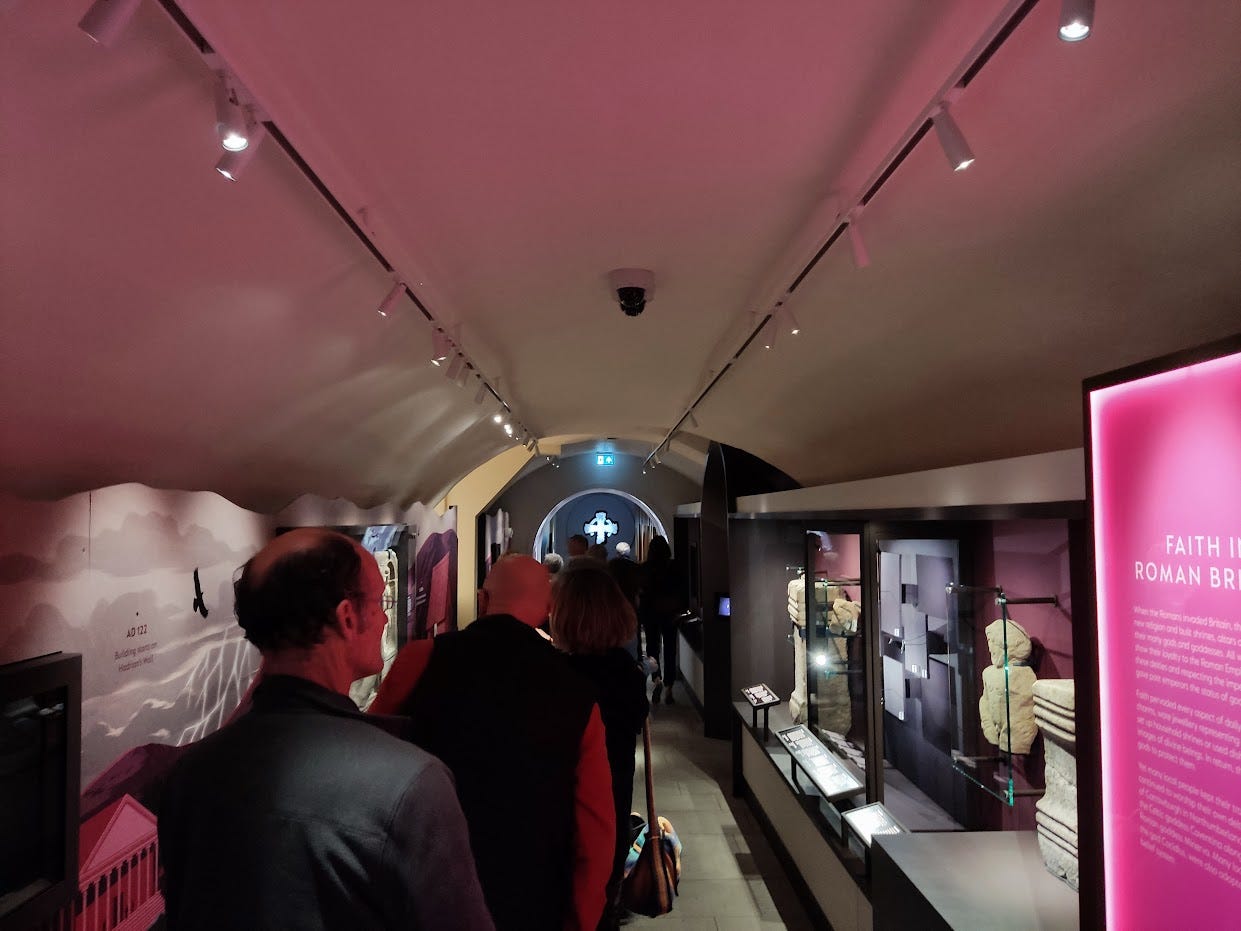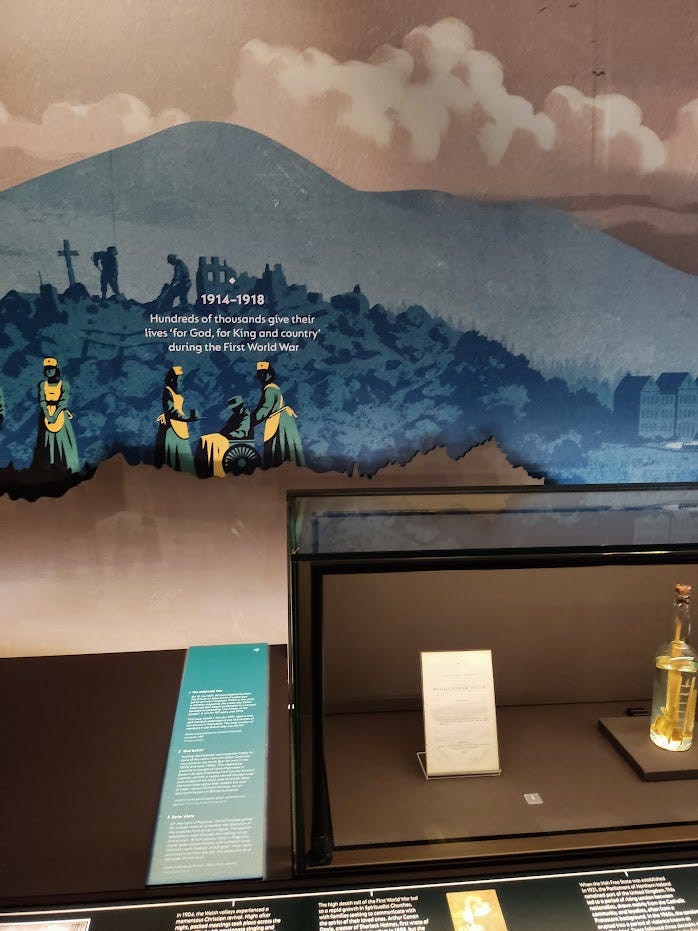Launch of The Faith Museum
Rejuvenation through heritage
On the evening of Thursday 26th September, my wife and I stepped into a medieval cellar-styled bar in Bishop Auckland, a small town near to Durham in North East England. The chamber was packed with people. Canapes and drinks were being served but there was barely room to move your arms to enjoy them.
Luckily we didn’t have to mingle for long as the event was kicked off with a welcome talk. The newly appointed Chief Operating Officer of The Auckland Project explained the importance of the museum for the town and how heritage was being used to revitalise the town. Before long we filed into the entrance where we joined a procession of people privileged with early access to review the exhibits.
The museum is broadly chronological and visitors are in for a treat as they view artefacts from dozens of lenders, including some special treasures. The displays are packed full of information and you can easily lose sense of time as you pass through. There are videos, interactive guides, and some activities, but you certainly get the sense the museum is aimed at an older demographic. This is unlikely to hold the attention of an infant, child, or many teenagers for very long.
There is great information about different practices and faith communities. There are also nuggets of information such as the first Sunday Schools in the country being started in Nottingham in 1751 where children learned to read and write using the Bible as a textbook. Some of the exhibits had rich stories around them including a Book of Common Prayer that, along with a pocket watch, helped stop a German bayonet from killing its owner.
As we weaved our way through the museum we came across the 1851 issue of The Latter-day Saints’ Millennial Star that I loaned them in August. Because of the lighting, I couldn’t get a good shot, but here is the accompanying information they wrote about the piece.
The Latter-day Saints’ Millennial Star
On 19 July 1837, the first missionaries from The Church of Jesus Christ of Latter-day Saints arrived in England. In 1840 a monthly magazine, The Latter-day Saints’ Millennial Star, began publication. Devoted to spreading “the fulness of the gospel”, it ran for 130 years until 1970.
This issue, dated 1 January 1851, reports that 463 members belonged to the 13 branches of the Church in Newcastle. The total number of members in the British Isles was 30,747.
Edited and published by Franklin D. Richards, Liverpool, 1851
Private collection
To try and cover the religious history of the British Isles from pre-history through to the contemporary period is no small task. unfortunately but understandably, only one spot could be afforded to The Church of Jesus Christ of Latter-day Saints. Originally there were plans to display an early copy of the Book of Mormon printed in the British Isles, but this fell through and instead, I was able to loan a copy of the Millennial Star which was published in England and ran from 1840 until 1970.
The museum is partly retrofitted and partly custom-built. In the upper portions of the purpose-built tithe barn, there is a stunning art installation called Eidolon. It is a single blue iris projected onto an almost invisible screen. The iris represents faith and although it is engulfed in flames, it is not consumed by them. The accompanying soundtrack is based on Daniel 3, which includes the story of Meshach, Shadrach, and Abednego who were thrown into a fire but remained unharmed by the flames.
The iris, in a similar fashion, is unharmed by the flames which represents the attacks on faith. The artist notes that it “symbolises the moment before the death of Christ or a martyr, when the physical body is attacked and sacrificed to God in agony, but lives on through faith.” The iris withstands and even blooms amidst the flames and communicates the notion that faith being tested to the limits makes it grow stronger.
There is a lot more to see, but the museum is an interesting contribution to the heritage sector and I am sure it will be a great attraction for those visiting Bishop Auckland. The town is a historical gem that has struggled along with many other North East England communities. Leveraging the past as a way to educate and rejuvenate is a win-win in my books.




